
medical negligence
Medical Tourism

Delighted to contribute to Amy Molloy‘s article in todays Independent on Medical Tourism and whether patients, who suffer severe and sometimes life altering injuries, can bring a medical negligence action in Ireland.
https://www.independent.ie/irish-news/get-legal-advice-first-before-seeking-medical-treatment-overseas-in-case-of-problems-government-warns/a137924021.html
RETAINED PRODUCTS OF CONCEPTION MEDICAL NEGLIGENCE CLAIMS*

What are retained products of conception?
Retained products of conception (RPOC) is a term used to describe placenta and/or foetal tissues that remains in the uterus following childbirth, medical termination of pregnancy or a miscarriage. RPOC can be caused when the uterus stops contracting which means that the placenta is not delivered or is only partially delivered. This condition is known as uterine atony.
As retained products of conception can cause women serious health problems, it is essential that after childbirth the midwife examines the placenta carefully to check that it is complete and that no tissue has been left behind. Where a child has been delivered by caesarean section, it is essential that in addition to checking the placenta, the obstetrician examines the womb before suturing, to ensure none of the placenta is left behind. If the midwife or obstetrician fails to check the placenta correctly, resulting in retained product, you may have a claim in medical negligence*.
Types of retained placenta
- Placenta adherents. This is when the placenta does not spontaneously separate from the uterus within 30 minutes of the baby being born. This is the most common type of retained placenta.
- Trapped placenta. This occurs when the placenta separates from the uterus, but does not spontaneously leave the uterus.
- Placenta accreta. This is the most dangerous type of retained placenta. It occurs when the placenta grows into the deeper layer of the uterus and is unable to spontaneously detach. This condition is more common where a woman has had a previous caesarean section delivery; or has had multiple pregnancies; or where there is womb scarring from a previous surgery; or where the placenta is low lying.
Placenta accreta is a very serious condition and can lead to a hysterotomy or a blood transfusion.
Risks of RPOC are greater in termination and miscarriages.
It is much more difficult to determine whether a patient has retained products of conception in terminations and miscarriages, as the placenta and foetal tissue has already been expelled from the womb. In the UK, RPOC are reported in 17% of first trimester miscarriages and 40% of second trimester miscarriages, as opposed to 3% at full term deliveries. If you are dealing with a miscarriage, may we offer your are sincere condolences. The HSE has further information on dealing with the aftermath of a miscarriage’s, which you may find helpful.
What are the Risks of Retained Products of Conception?
If left untreated, RPOC can cause infection and/or sepsis, which can be life threatening. It can also have implications on fertility and can make you more susceptible to future miscarriages.
What are the symptoms of Retained Products of Conception?
-
Heavy and prolonged vaginal/uterine bleeding
After childbirth, a termination or a miscarriage some bleeding is normal. However, if this bleeding is very heavy or prolonged, you should seek immediate medical attention, as this could be a sign of RPOC. Heaving bleeding, is that which is significantly heavier than your normal period and prolonged bleeding, is bleeding that continues for longer than three weeks.
-
Late period.
If your period does not return within six weeks of childbirth, termination or miscarriage, it may be a symptom of RPOC and you should medical attention.
-
Fever, pelvic pain or tenderness.
These can be symptoms not only of RPOC, but can also be signs of severe infection and require immediate medical attention. It is important to note that in certain instances RPOC can lead to sepsis, which is a life-threatening condition.
How is RCOP diagnosed
Ideally the RPOC should be spotted when the placenta is examined. Thereafter, there are a number of tests that can be done, including physical examinations, ultrasounds or hysteroscopy.
Treatment
If spotted early RPOC can often be dealt with by medication which encourages the uterus to expel the retained products. However, in certain cases it may require surgery under general anaesthetic.
RPOC medical negligence claims
The mere fact that you have been left with RPOC after childbirth, miscarriage or termination, does not, in and of itself mean that you have claim in medical negligence*. This will depend primarily on two factors:
- The size of the RPOC left in the uterus; and
- The length of time it has taken for the condition to be diagnosed.
As with all medical negligence claims*, the matter will depend entirely on the individual facts of each case. If you are concerned about your treatment with respect to RPOC and particularly where you have been unwell, we would suggest you contact an expert medical negligence solicitor*.
Hanahoe & Hanahoe have over 40 years’ experience in dealing with medical negligence claims* and represents clients from all across the country.
*In contentious business, a solicitor may not calculate fees or other charges as a percentage or proportion of any award or settlement.
Sepsis and Medical Negligence Claims*
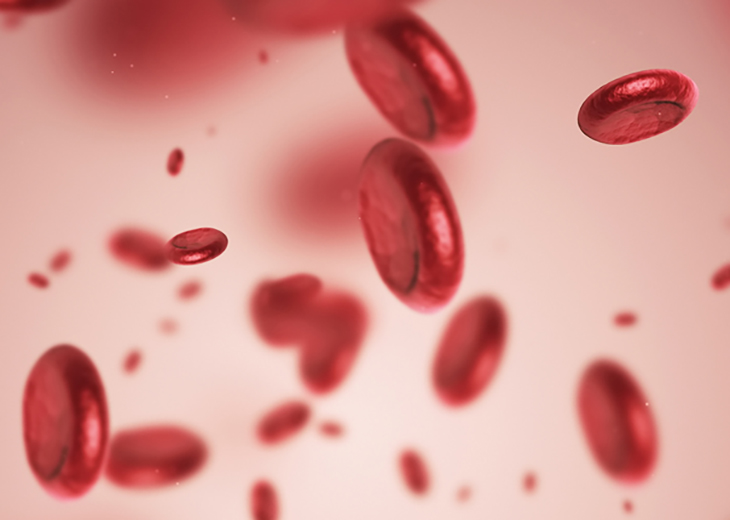
Sepsis and Medical Negligence Claims
Our medical negligence solicitors often get queries in relation to sepsis and medical negligence claims*. Sepsis is a serious life-threatening condition. In Ireland approximately 16,000 people are diagnosed with sepsis every year. While the survival rate is improving, approximately 18% of people diagnosed with sepsis still succumb to the infection. If you or a loved one has contracted sepsis and you believe it was as a result of medical negligence, it is important that you understand your legal options. This is something that one of our expert medical negligence solicitors will happily assist you with.
What is sepsis?
Sepsis is a life-threatening illness caused by your body’s response to an infection. Our immune system protects us from illnesses and infections, sepsis occurs when the body’s response to an infection damages is own tissues. When the infection fighting process turns on the body this can cause organs to function poorly or abnormally. Sepsis develops when the chemicals in the immune system released into the bloodstream to fight infections causes inflammation throughout the entire body instead. Severe cases of sepsis can lead to septic shock. This is a medical emergency that can cause a drop in blood pressure that can lead to severe organ failure and indeed death.
What are the symptoms of sepsis?
There are three stages to sepsis—
- Sepsis
- Severe sepsis
- Septic shock
Like many medical conditions the earlier your condition is treated the greater your chances of survival. The main symptoms of sepsis are–
- Feeling generally very unwell.
- Difficulty urinating, having not urinated in 24 hours in adults or older children, or in the last 12 hours in babies or young children.
- Very high or low temperatures.
- Extreme shivering or muscle pain.
- Swelling, redness, pain around a cut or wound.
- Slurred speech or confusion.
Sepsis is much more prevalent in patients aged over 65, or under 1 years of age. It is also more common in patients who are pregnant or who have chronic health conditions. As well as being much more common, it is a much more serious condition for people in these categories.
When is sepsis the result of medical negligence?
Patients developing sepsis is quite common in hospitals and medical facilities. The mere development of sepsis does not in and of itself constitute medical negligence. However, if a medical practitioner fails in their duty of care to a patient, or fails to adhere to certain hygiene standards, which increases the risk of sepsis dramatically, that patient may well have a medical negligence claim.
Patients may contract sepsis due to poor sterilization of medical instruments, lack of hygiene – such as failure to regularly wash hands or replace surgical gloves, failure to provide proper room treatment, failure to monitor and regularly replace medical instruments such as cannulas, or by placing patients in close proximity to other patients likely to pass on infection. If a patient contracts sepsis in any of the above ways they may potentially have a medical negligence claim and they should consult with one of our expert medical negligence solicitors.
Failure by medical practitioner to detect the onset of sepsis may also result in the patient having a claim in medical negligence. This often happens when a GP or a healthcare worker in A&E fails to spot the signs of sepsis and make a correct diagnosis. Given the importance of early treatment and the speed at which sepsis can progress, any delay in diagnosis can make a huge difference in the manner which patient recovers or whether they recover at all.
Can I bring a medical negligence claim as a result of contracting sepsis?
In order to answer this question properly you would need to consult with one of our expert medical negligence solicitors. As a general rule, to bring a successful medical negligence claim you have to be able to prove that —
- That the care you received was below an acceptable standard
- That the negligent failure to provide this standard of care resulted in you contracting sepsis.
*In sepsis medical negligence claims, hygiene standards are generally the most important factor when there is reasonable delay in the development of symptoms. If either of these resulted in you contracting sepsis or resulted in the worsening of your condition you may have a potential medical negligence compensation claim.
How do I make a medical negligence claim?
To discuss this in greater detail you should contact one of our expert medical negligence solicitors. It is important to note that before bringing a medical negligence claim, we must first obtain an expert medical opinion from a suitable qualified medical practitioner stating that the care you received was below an appropriate standard and as such was negligent. The expert opinion will also have to prove causation, i.e., that the hospital or doctor’s negligence resulted in you either contracting sepsis, or your condition significantly worsening.
Request Consultation
Enter Your Details Below To Request Consultation By Either Phone, Zoom or in Person
Or Call Us Now On 045 897784 Or On 01 5255637
Hanahoe And Hanahoe’s Medical Negligence Solicitors Welcome New Recommendations On The Management Of Medical Negligence Claims*
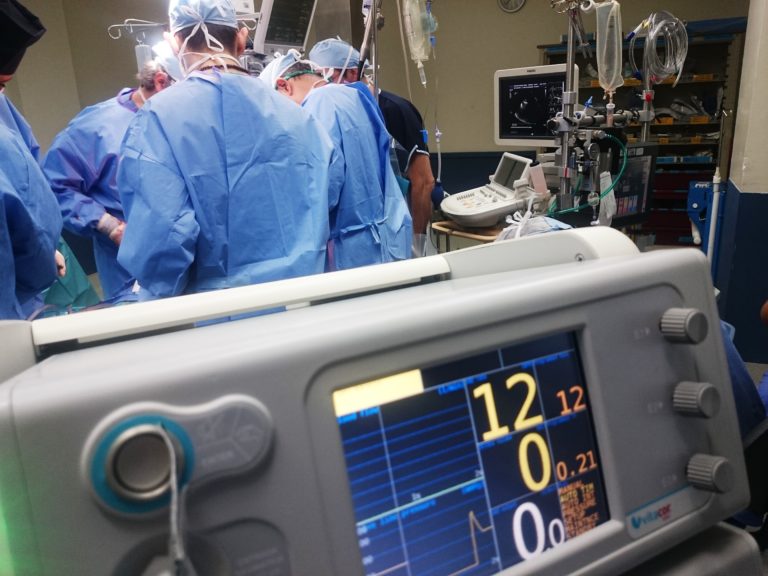
New Report on Medical Negligence Claims*
Hanahoe and Hanahoe’s team of medical negligence solicitors, welcome the findings of a new report on medial negligence claims* and their management. The Expert Group Report to Review the Law of Torts and the Current Systems for the Management of Clinical Negligence Claims chaired by Mr Justice Charles Meenan, published their report on the 16th December 2020. Our team of medical negligence solicitors have been eagerly awaiting the outcome of this report. We believe the reports findings will have a positive impact in allowing the Courts deal with medical negligence claims* proactively and compassionately.
The Report can be accessed here, and details 17 recommendations which we summarize as follows:
- Actions, practices and procedures must be introduced to reflect that medical negligence claims* involve issues not arising in other personal injury claims*;
- Pre-action protocols are to be implemented, together with the commencement of the provision extending the Statute of Limitations period for medical negligence claims* from two years to three years;
- Procedures allowing for the case management of medical negligence claims* are to be implemented;
- That there should be a dedicated list in the High Court to deal with the management and hearing of medical negligence claims*;
- That medical records, when requested, are provided in a timely way and in a legible form;
- That failure to comply with the requirements of pre-action protocols should be penalized with costs or, in cases of persistent non-compliance, an order to dismiss the claim or defence;
- The amending of Section. 26 of the Civil Liability and Courts Act 2004 is recommended in order to provide for sanctions where a defendant files a defence containing matters in respect of which there is no supportive expert report.
- The Expert Group does not recommend the introduction of a no-fault system to deal with certain clinical negligence claims*;
- The establishment of a compensation scheme to deal with certain vaccine damage medical negligence claims*;
- The Expert Group does not recommend the establishment of a Medical Injuries Assessment Board (MIAB), similar to that of the Personal Injuries Assessment Board, which was established to deal with personal injury claims*.
- That a system for the “restoration of trust”, as provided for in Chapter 5 of the CervicalCheck Tribunal Act 2019 be made available for other clinical negligence claims*;
- Ex gratia payment schemes only have limited application;
- That care packages provided by the HSE be funded so as to reduce the difference between what the HSE can offer and what a court would award;
- That the disclosure of certain patient safety incidents be made mandatory;
- That failure to make a disclosure, when required by law to do so, should be considered to be either professional misconduct or poor professional performance by the healthcare provider involved, and should be the subject of an inquiry by the relevant professional body;
- It should be a criminal offence for a healthcare provider: – (i) to deliberately fail to make a disclosure of a serious reportable patient safety incident when required by law to do so; (ii) to alter medical records with the intent to mislead or deceive;
- That the provisions of the Health Act 2007 be amended so as to enable HIQA to carry out investigations other than those currently provided for.
Extension of the Statute in Medical Negligence Claims* and Pre-action protocols
One of the major findings of the report is the need to establish pre-action protocols in medical negligence case*. This, together with the extension of time limits under the statute of limitations would certainly be welcomed by our medical negligence solicitors*. Efficient and speedy reforms are now needed to bring these recommendations to fruition, in order to achieve additional effectiveness in the management of complex medical negligence claims. The protocols encourage co-operation and provide for the narrowing of issues in dispute between the parties. However, in order for the protocols to work effectively, it is also important for the parties to be compelled to address the issue of quantum in a meaningful way at the pre-action stage which in turn will allow for realistic offers of settlement much earlier in the life of the claim.
The Admission of Witness Statements in Medical Negligence Claims*
The Report also recommends the provision of witness statements in medical negligence claims*. This will avoid claimants having to give evidence of a personal or intimate nature in open court. The Report posits that the adversarial aspect of a court hearing could be confined to resolving disputes between suitably qualified experts. This practice is already accepted in a number of common law jurisdictions, where they can play a crucial role in a case. The provision of witness statements allows advance notice of the evidence to be relied on at a clinical negligence claim* trial, resulting in better prepared experts.
The Report suggests that the use of witness statements could potentially remove the need for the claimant to give evidence in court unless he or she wishes to do so, but it is more likely that such statements would only replace the evidence-in-chief of the witness. The medical negligence lawyers for each party would still to retain the right to cross-examine their opponent’s witness, in order to “test” the cogency of the evidence and the witness’s credibility. In such circumstances, the claimant would still have to submit to cross-examination on his or her evidence.
Case management of Medical Negligence Claims
The Expert Group recommended the implementation of the excellent case management proposals set out in the report of the Working Group on Medical Negligence and Periodic Payments (Module 3) which, the Expert Group say, would considerably improve the current system to the benefit of the litigants involved. However, The Expert Group also notes that, “whilst proposed rules have been circulated for the implementation of pretrial protocols and a Statutory Instrument is being drafted, there has been no such progress in the introduction of case management”.
Case management is an essential tool for medical negligence solicitors and lawyers for the purposes of controlling lengthy, complex and potentially unwieldy medical negligence, including GP negligence or hospital negligence claims.
Hanahoe and Hanahoe solicitors are an award-winning solicitors firm, with over 40 years’ experience in dealing with complex medical negligence claims*. If you have a query about a possible medical negligence claim*, please contact our office to speak with one of our medical negligence solicitors* today.
*In contentious business a solicitor may not calculate fees or other charges as a percentage or proportion of any award or settlement.
Spinal cord injuries suffered by three people in Ireland a week
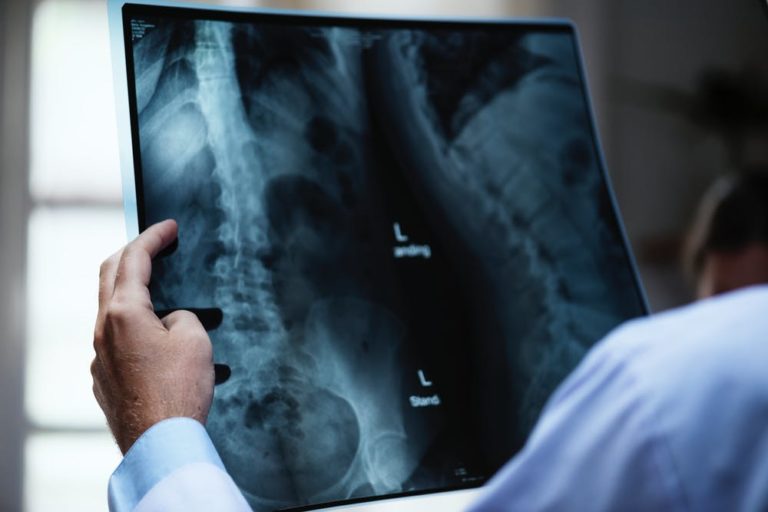
Spinal cord injuries suffered by three people in Ireland a week
Research recently publish by Eimear Smith of the Mater Hospital shows that an average of three people a week sustain life-changing spinal cord injuries in Ireland. The research shows the cause of these injuries is either the result of degenerative disease (referred to as non-traumatic injury) or accidents* (referred to as traumatic injuries)

Traumatic and Non-Traumatic Injuries
By far the most common cause of traumatic injury are accidental falls accounting for 55% of spinal cord injuries with partial paralysis the most common outcome. Road traffic accidents are the crashes are the next most common cause accounting for almost one-in-five traumatic spinal injuries. While accidental sporting injuries for more than one-in-ten. Males account for the majority of traumatic spinal cord injuries, with 72% of people suffering these horrific injuries being men. Non-traumatic injury occurs as a result of degenerative spinal diseases or secondary cancers affecting the spinal cord.
The research also shows that 40% of people who suffer from spinal cord injuries will walk again. However people are able to walk again are more likely to suffer from mental illness and 22% more likely to be living below the poverty line than those in a wheelchair. It also highlights the disgraceful situation currently pertaining in Ireland were people who sustain spinal cord injuries are not automatically entitled to a medical card
Spinal Injury Ireland’s Strategic Plan
The research underpins a new strategic plan for Spinal Injuries Ireland to provide one-to-one support to people with such horrific injuries. However Spinal Injuries Ireland’s resources are already under huge pressure and this research indicates that the number of people using their services will increase from 2100 to 3600 by 2023. With Spinal Injuries Ireland only receiving 40% of their operational funding from the state this would mean they would need to increase their annual fundraising form €600,000 to €1.4 million.
Contact Us
Given the serious and life altering consequence of spinal cord injuries you should seek the advice of a solicitor if you are a loved one has suffered in such traumatic accident. For further information in relation to spinal cord injuries or speak to one of our expert personal injury* solicitors, please do not hesitate to contact Hanahoe and Hanahoe solicitors on 045 897784 (Naas Office) or on 015255637 (Dublin office) or at info@hanahoeandhanahoe.com or on Facebook
This article is merely for information purposes and is not and should not be taken as legal advice. If you have any queries in relation to this or any other aspect of personal injury* you should consult with a solicitor who specialises in personal injury law*. No solicitor/client relationship or duty of care or liability of any nature exists between Hanahoe and Hanahoe solicitors and you, until you receive written confirmation that we are acting as solicitors on your behalf
*In contentious business a solicitor may not calculate fees or other charges as a percentage or proportion of any award or settlement.
Depuy Spinal Implants Recall
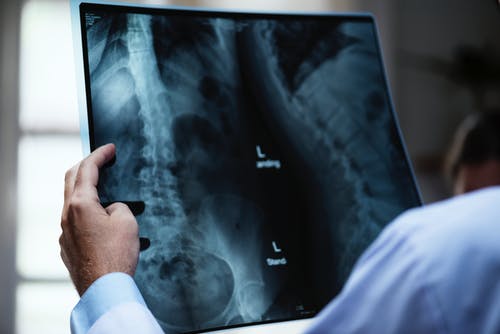
The Medical Negligence team at Hanahoe and Hanahoe are being made increasingly aware of the dangers of defective medical devices (see our previous article) and the recent recall of the Depuy Spinal Implants further highlights the problem. It also puts into sharp focus the problems in Ireland with safety of the many medical devices used and the lack of appropriate oversight
Depuy Spinal Device Recall in the UK
The UK Medicines and Healthcare Products Regulatory Agency (MHRA) have recently issued a safety notice regarding the Depuy Synthes Spine’s Concorde Lift device which is used in spinal fusion surgery for people suffering from degenerative disc disease. Depuy Sythes Spine have now announced that the device is being recalled after a number of post-operative complaints were received. The manufacturers say patients who have received defective devices could be at risk for poor spine biomechanics, pain, reversible or irreversible spinal nerve injuries and malunion/non-union. Further use of the defective implants in the UK is to cease immediately. As of the date of writing this article we do not believe there have been any recall of this device in Ireland.
Contact Us
Hanahoe and Hanahoe solicitors is an award winning law firm with a particular expertise is medical negligence and personal injury law. For further information in relation to an injury caused by a defective medical product or indeed any aspect of medical negligence or personal injury law, please do not hesitate to contact Hanahoe and Hanahoe solicitors at our Naas Office on 045 897784, at our Dublin office on 01 5255637 or at info@hanahoeandhanahoe.com. or on Facebook.
This article is merely for information purposes and is not and should not be taken as legal advice. If you have any queries in relation to this or any other aspect of medical negligence, you should contact us. No solicitor/client relationship or duty of care or liability of any nature exists between you and Hanahoe and Hanahoe solicitors and you, until you receive written confirmation that we are acting as solicitors on your behalf.
*In contentious business a solicitor may not calculate fees or other charges as a percentage or proportion of any award or settlement.
Hanahoe and Hanahoe nominated as Personal Injury & Medical Negligence Law Firm of the Year
 Hanahoe and Hanahoe solicitors were delighted to be nominated as Personal Injury & Medical Negligence Law Firm of the Year at this Irish Law Awards. Our firm is very proud of the all the hard work we have done over the years assisting countless numbers of clients who have suffered serious injuries as a result of accidents or medical negligence. At Hanahoe and Hanahoe we take our responsibilities to our clients, the profession and the Court incredibly seriously. We are committed to continued development of our knowledge and expertise in all area’s of the law, but particularly in the areas of personal injury and medical negligence law*. We also strive to have the most update technologies and case management systems to ensure that we can provide our clients with the optimum service. We see this nomination for the this award as an acknowledgement not only to our expertise in the areas of of personal injury and medical negligence law, but also of our commitment to our clients.
Hanahoe and Hanahoe solicitors were delighted to be nominated as Personal Injury & Medical Negligence Law Firm of the Year at this Irish Law Awards. Our firm is very proud of the all the hard work we have done over the years assisting countless numbers of clients who have suffered serious injuries as a result of accidents or medical negligence. At Hanahoe and Hanahoe we take our responsibilities to our clients, the profession and the Court incredibly seriously. We are committed to continued development of our knowledge and expertise in all area’s of the law, but particularly in the areas of personal injury and medical negligence law*. We also strive to have the most update technologies and case management systems to ensure that we can provide our clients with the optimum service. We see this nomination for the this award as an acknowledgement not only to our expertise in the areas of of personal injury and medical negligence law, but also of our commitment to our clients.
For further information in relation to personal injury or medical negligence claims please do not hesitate to contact Hanahoe and Hanahoe solicitors on 045 897784 (Naas Office) or on 015255637 (Dublin office) or at info@hanahoeandhanahoe.com or on Facebook
This article is merely for information purposes and is not and should not be taken as legal advice. If you have any queries in relation to this or any other aspect of personal injury or medical negligence law* you should consult with a solicitor who specialises in personal injury and medical negligence law*. No solicitor/client relationship or duty of care or liability of any nature exists between Hanahoe and Hanahoe solicitors, until you receive written confirmation that we are acting as solicitors on your behalf.
*In contentious business a solicitor may not calculate fees or other charges as a percentage or proportion of any award or settlement.
1000 plus health episodes may have been caused by defective medical devices

We are receiving an increasing number of enquiries from clients in relation to defective medical devices and potential medical negligence actions*. According to a recent article in the Irish Times more than ‘1000 adverse health episodes that might have been caused by medical devices’ were reported in 2017 to the Health Products Regulatory Authority (HPRA), the body sanctioned to monitor medical devices in Ireland. Such defective medical devices can cause serious injuries to the person these products have been inserted into. The Irish Times goes to report that of the 1041 incidents reported 2017, the HPRA have concluded their investigations in 594 of the cases. In 156 of these 594 cases, the patient’s condition has been definitively linked to the medical device. In fact according to the Irish Times ‘Overall, 80 per cent of the 2017 cases, for which investigations have been concluded, were found to be incidents which were caused, directly or partly, by the medical device, or which led to the manufacturer taking some type of corrective action’.
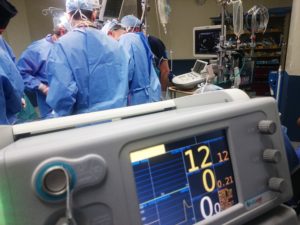 Two major concerns with the medical device industry is 1) that if a product receives the CE Mark, which is essentially the Quality Approval Stamp, in one EU member state, it can be marketed across the EU. And 2) Medical devices are often allowed on to the market without human trials. Instead the manufactures monitors the devices after they have been released to the market for any potential problems. This is what is referred to in the industry as ‘post market surveillance’. unlike other products, these devices are often inserted into a patient’s body, so if a fault is detected and the product needs to be recalled, the consequences can be severe. As we have seen from the Vaginal Mesh scandal, it can often be very difficult to remove these devices and the damage caused to patients can be devastating. The other difficulty is that these devices may have been inserted into countless patients, before any defect is realised. This is why you often see what amount to class actions in these types of cases.
Two major concerns with the medical device industry is 1) that if a product receives the CE Mark, which is essentially the Quality Approval Stamp, in one EU member state, it can be marketed across the EU. And 2) Medical devices are often allowed on to the market without human trials. Instead the manufactures monitors the devices after they have been released to the market for any potential problems. This is what is referred to in the industry as ‘post market surveillance’. unlike other products, these devices are often inserted into a patient’s body, so if a fault is detected and the product needs to be recalled, the consequences can be severe. As we have seen from the Vaginal Mesh scandal, it can often be very difficult to remove these devices and the damage caused to patients can be devastating. The other difficulty is that these devices may have been inserted into countless patients, before any defect is realised. This is why you often see what amount to class actions in these types of cases.
So what do if I feel I have been adversely affected by such a device?
Your first port of call should be to seek immediate medical advice. You should then report the incident to the HPRA so they can investigate the matter.
Do I have a Medical Negligence* case if I have been injured by a Medical Device?
Potentially. The law is governed by the Liability for Defective Products Act 1991 and in order to sustain a claim, you must prove firstly that you were injured, secondly that the medical device was defective and thirdly that there is a causal relationship between the defected device and your injury.
Unlike other clinical negligence actions *your case will most likely be against the manufacturer of the device and not against the hospital or doctor who inserted it. As it not technically a medical negligence action, it will generally not be necessary to obtain an expert report about the care you received. It will however be necessary to obtain a report setting out the injuries you sustained and it may be necessary to obtain an expert report from and engineer to set out the defect in the device.
Hanahoe and Hanahoe solicitors is an award winning law firm with a particular expertise is medical negligence and personal injury law. *For further information in relation to an injury caused by a defective medical product or indeed any aspect of medical negligence or personal injury law, please do not hesitate to contact Hanahoe and Hanahoe solicitors at our Naas Office on 045 897784, at our Dublin office on 01 5255637 or at info@hanahoeandhanahoe.com. or on Facebook.
This article is merely for information purposes and is not and should not be taken as legal advice. If you have any queries in relation to this or any other aspect of medical negligence, you should contact us. No solicitor/client relationship or duty of care or liability of any nature exists between you and Hanahoe and Hanahoe solicitors and you, until you receive written confirmation that we are acting as solicitors on your behalf.
*In contentious business a solicitor may not calculate fees or other charges as a percentage or proportion of any award or settlement.


